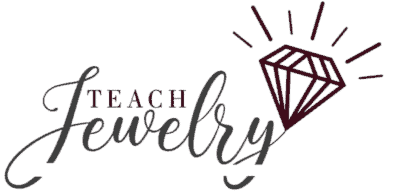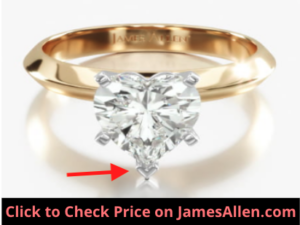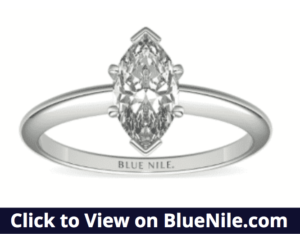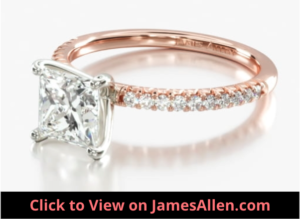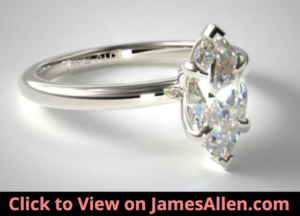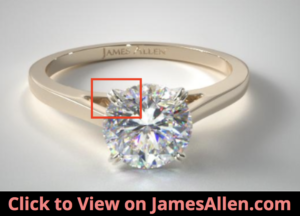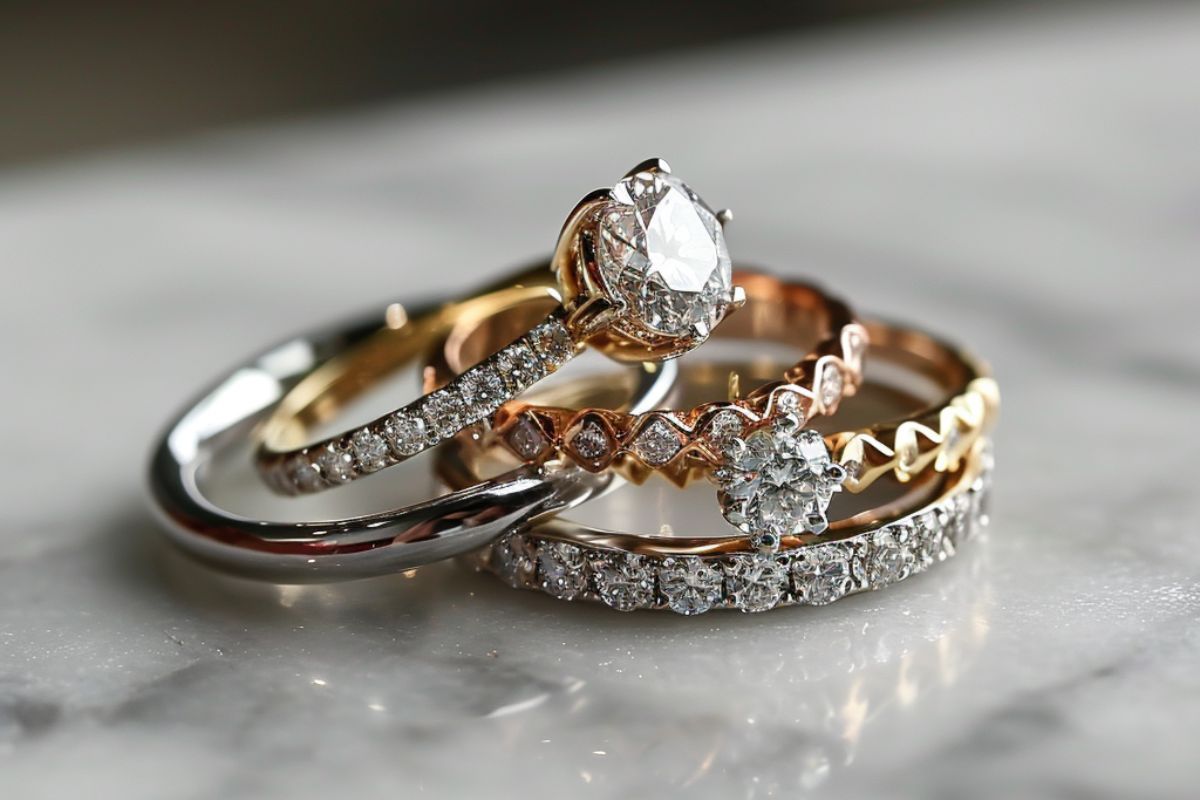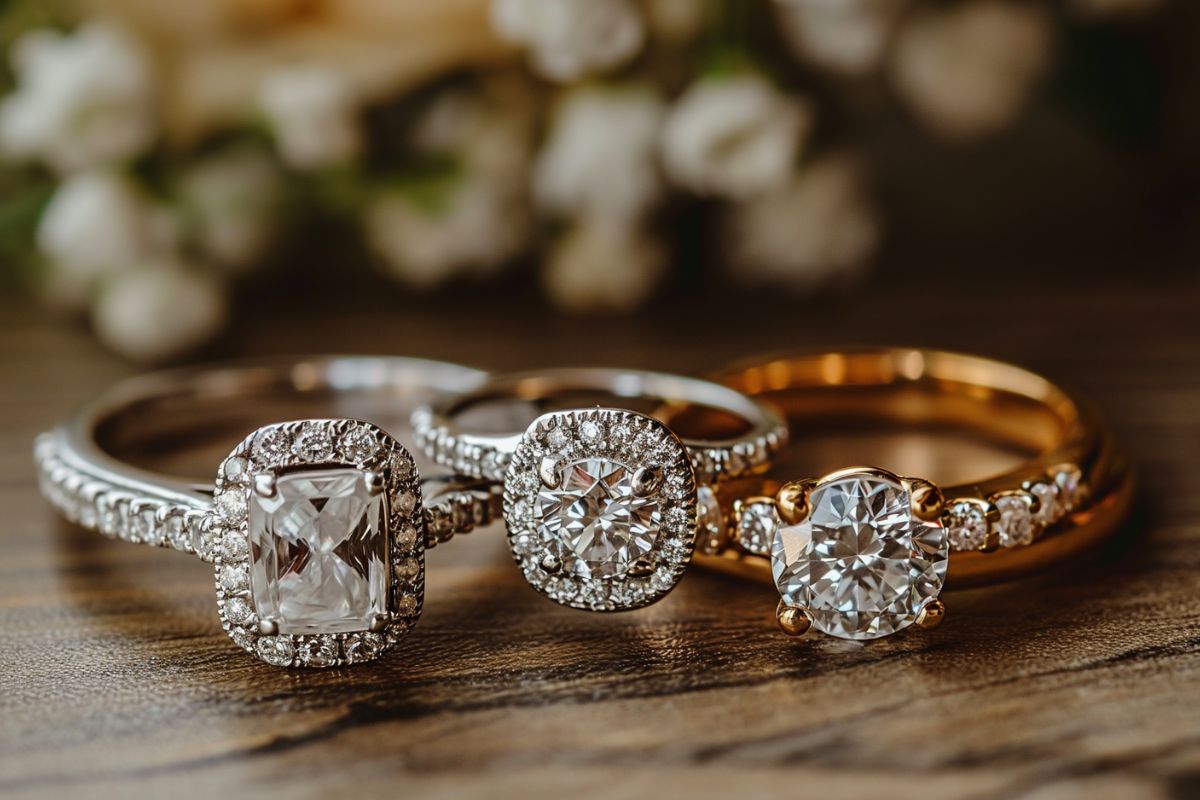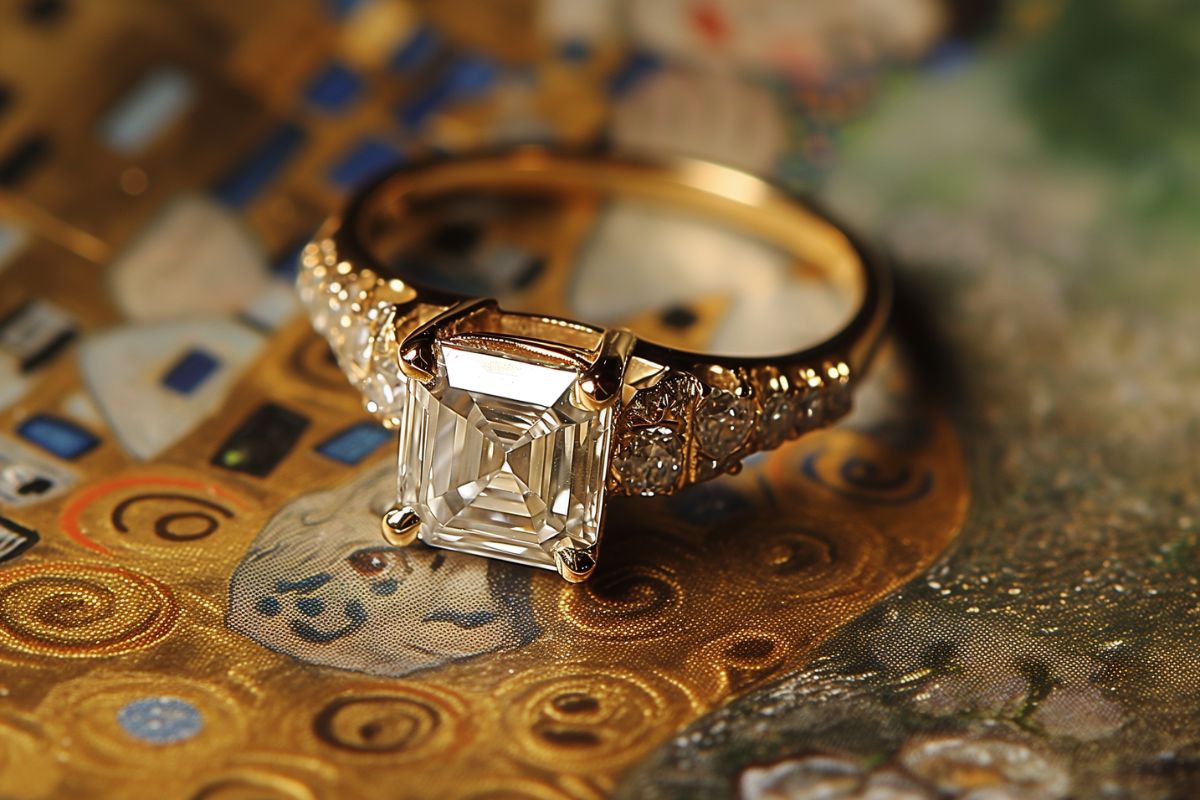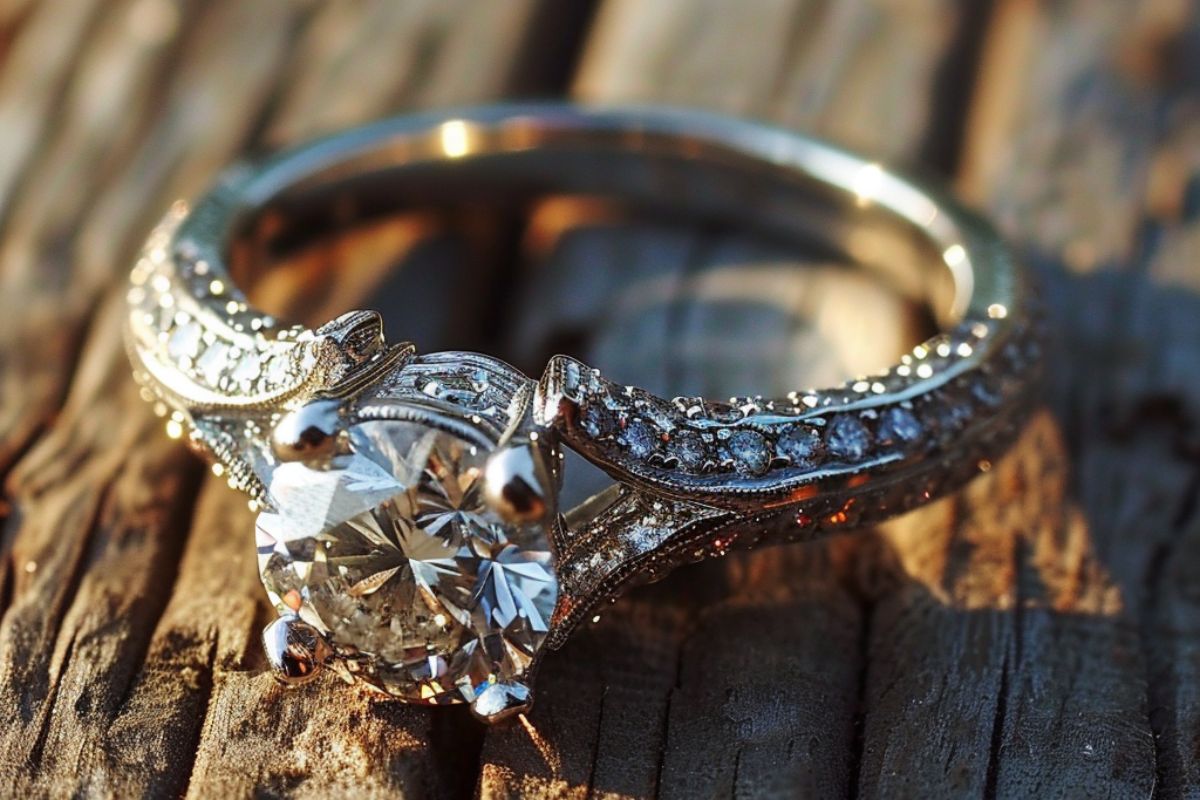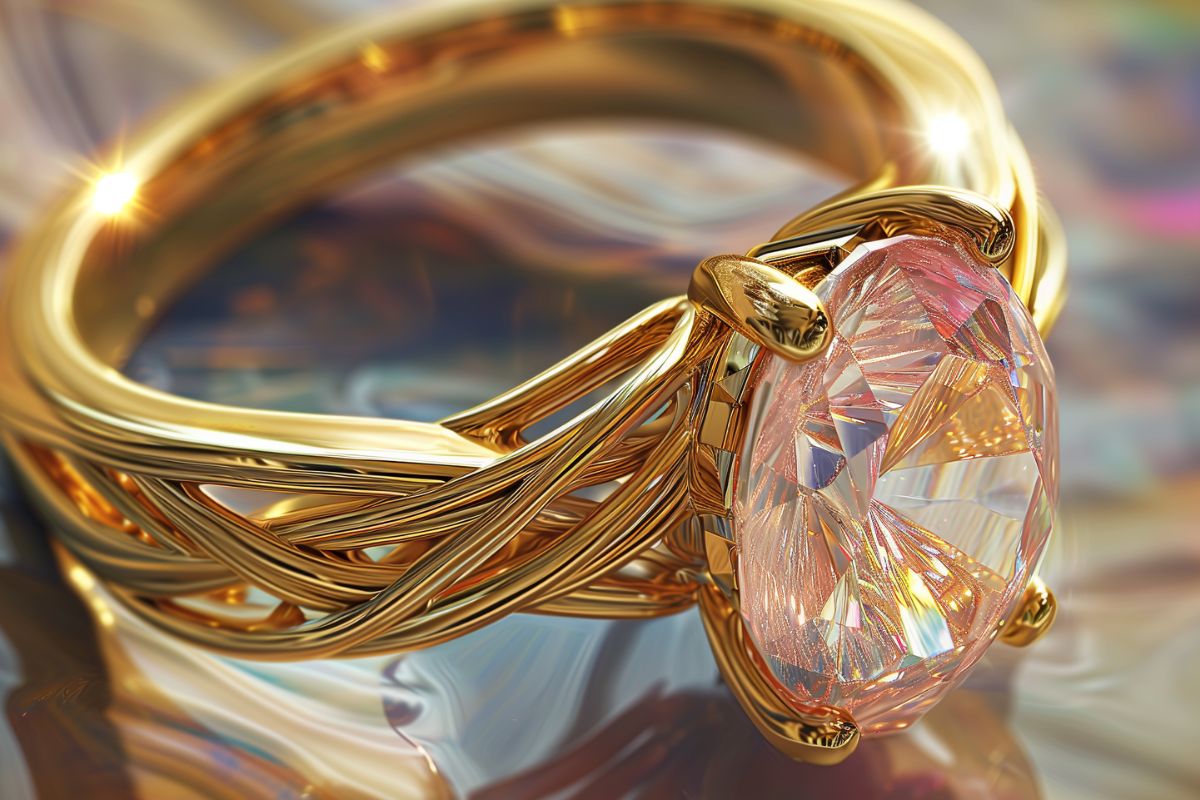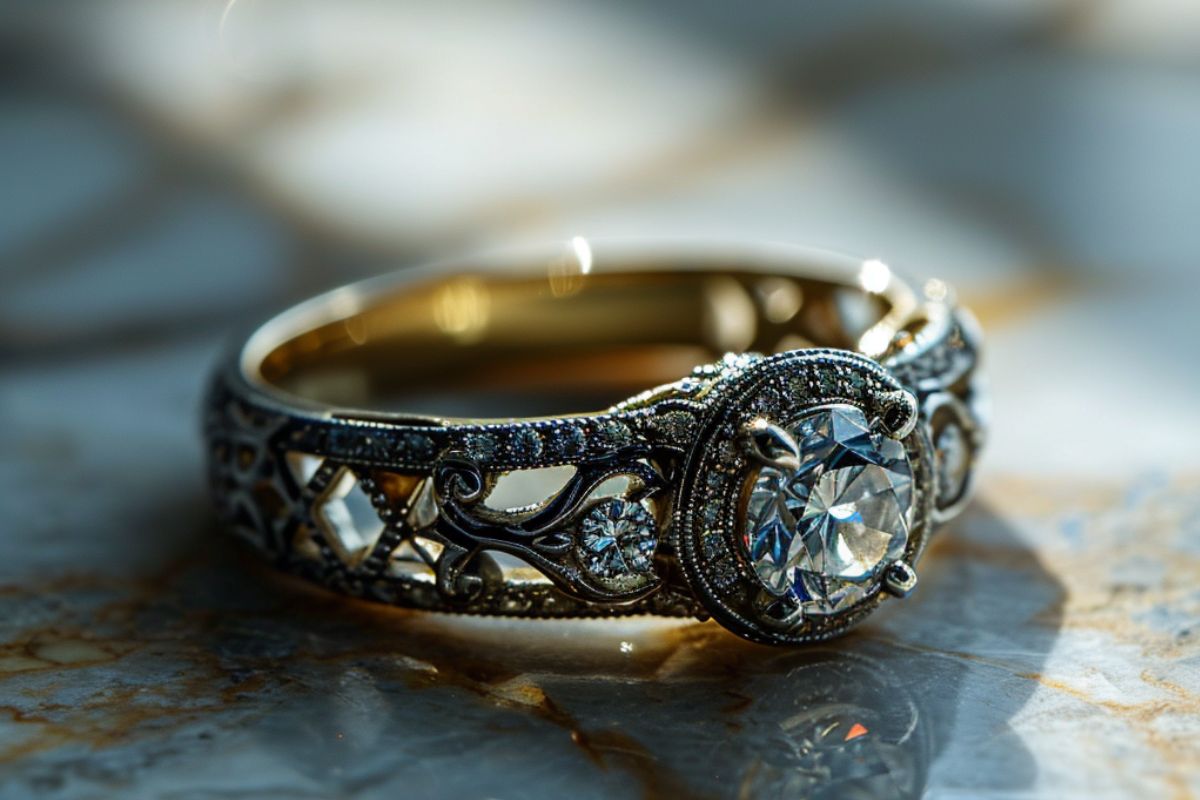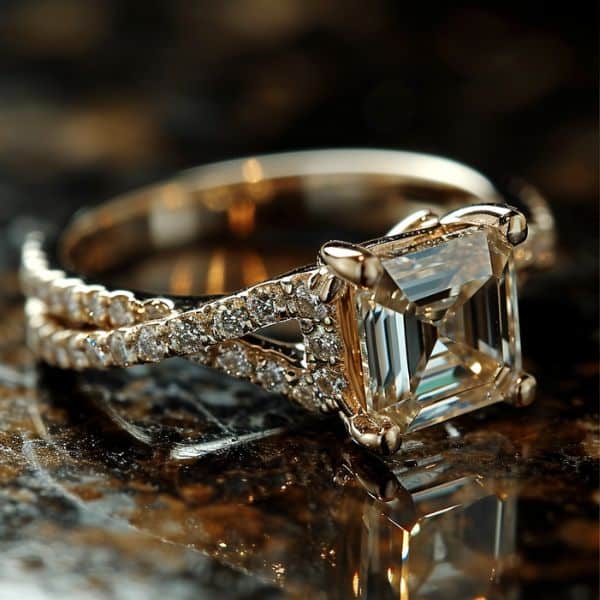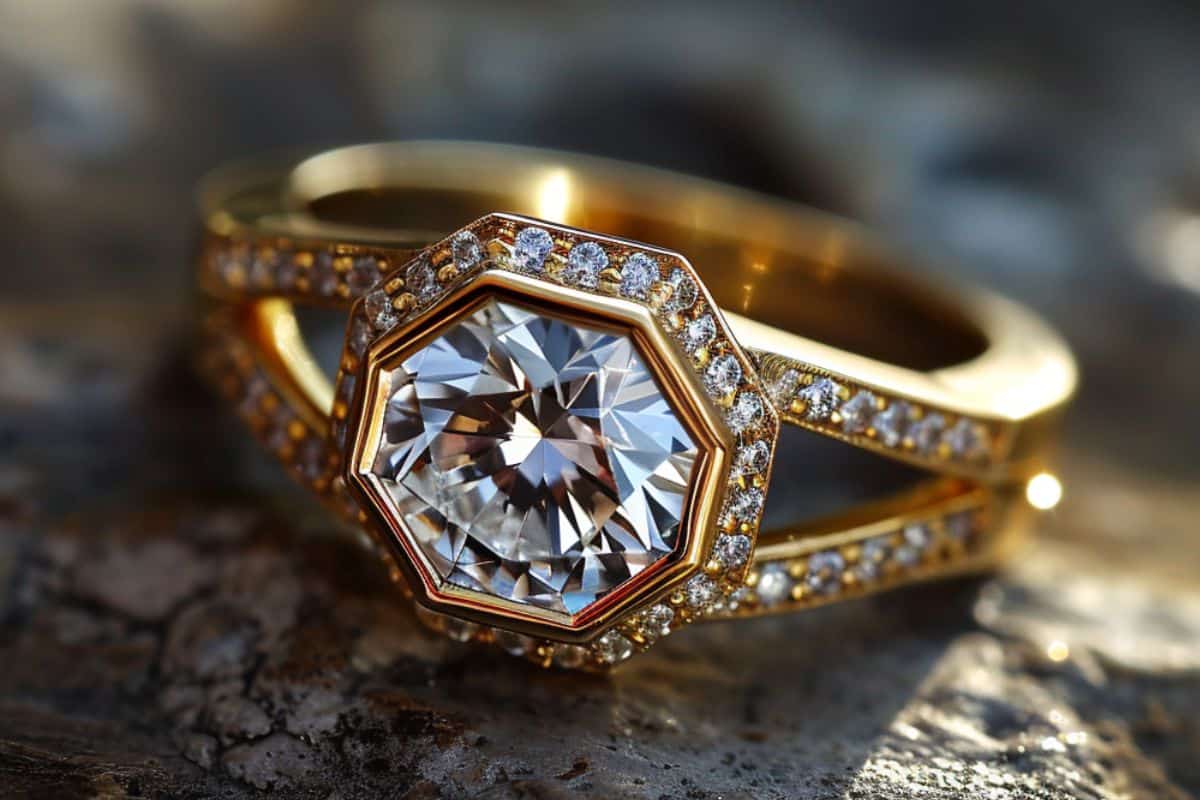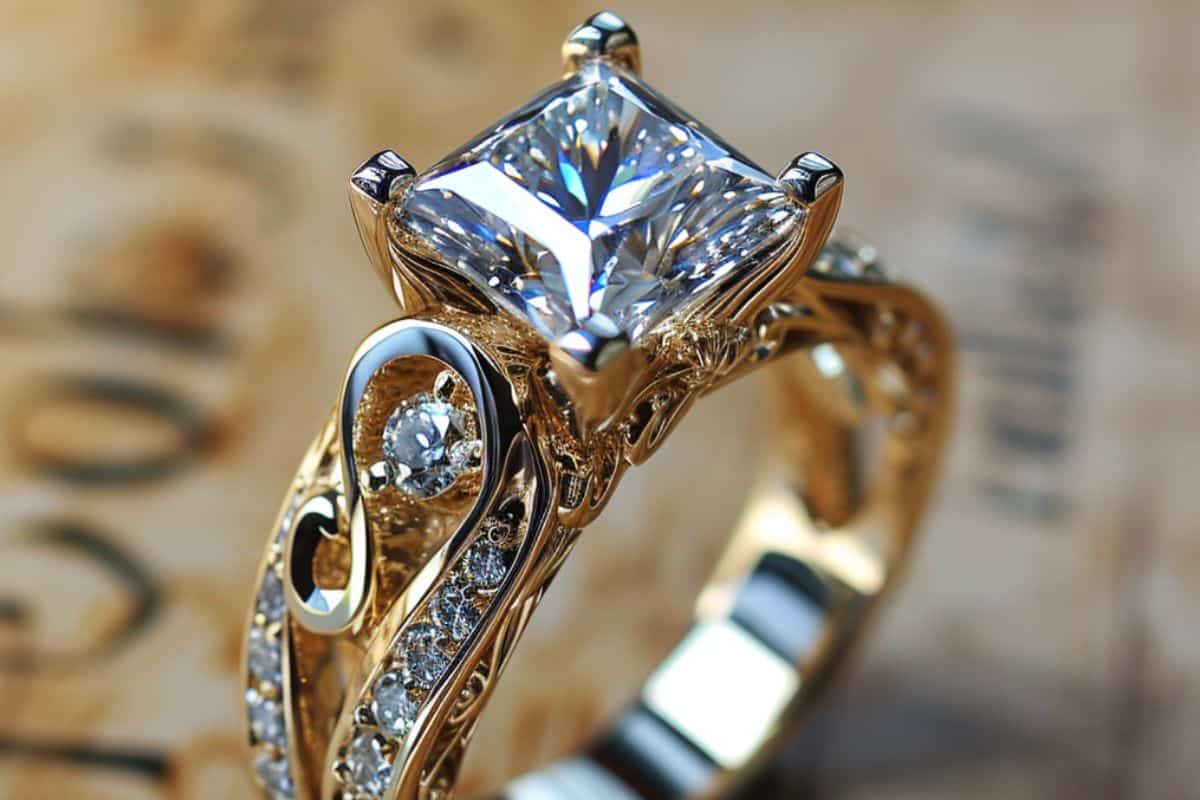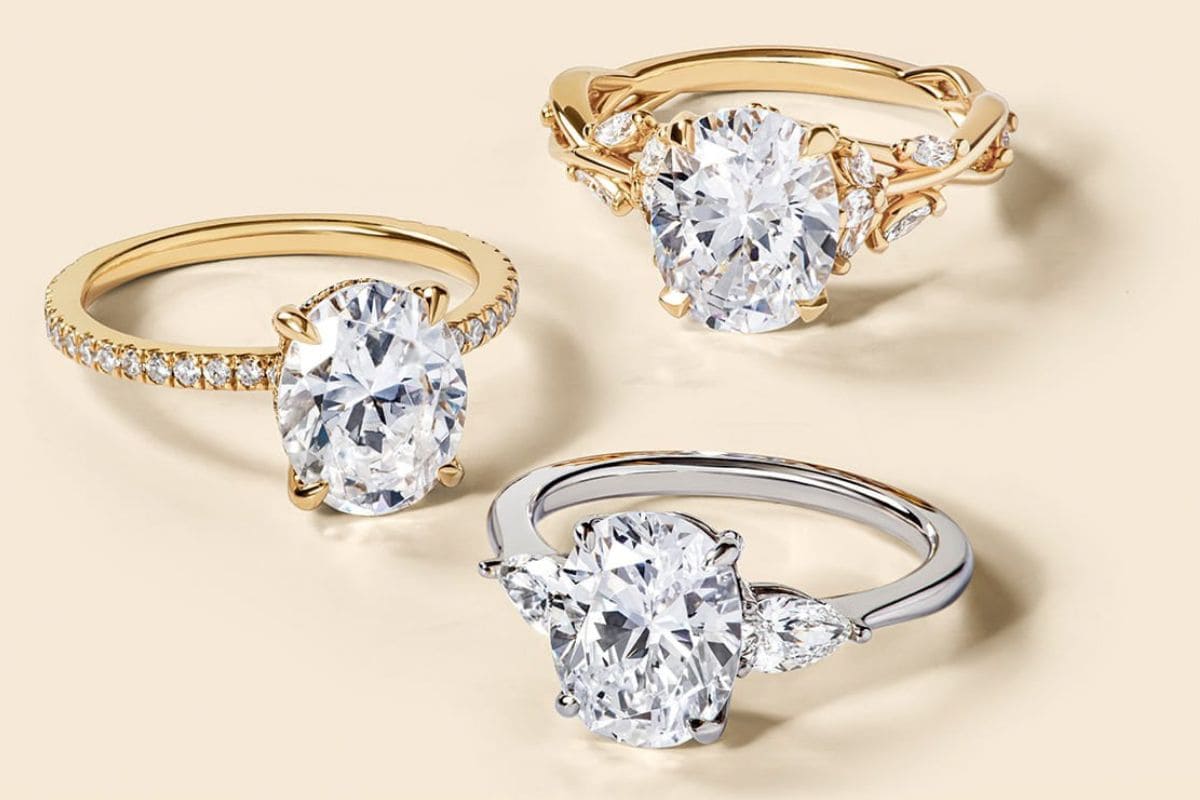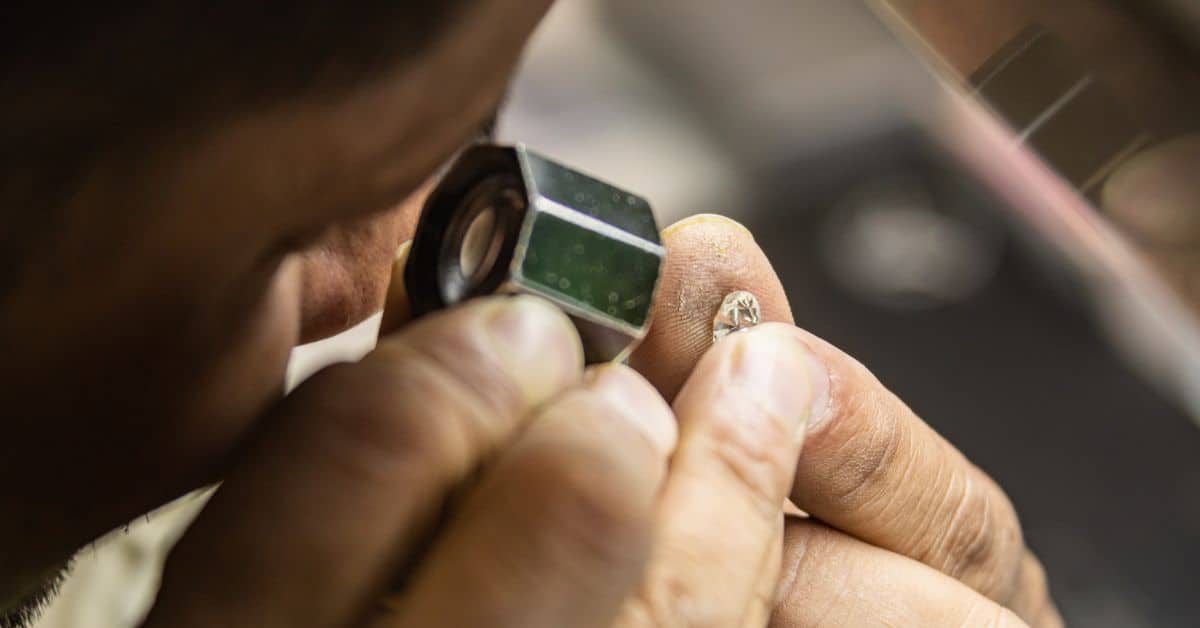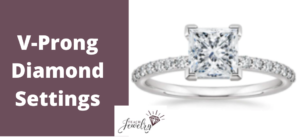
If you’ve chosen a prong setting for your diamond ring, you know there are still several variations to consider.
One type is a V-prong setting, which are thin bands of metal shaped like a V that grip the edges of the diamond.
Let’s examine V-prong settings including an overview, pros and cons, how they compare to other types of prong settings, and if they’re right for your ring.
What are V-Prong Diamond Settings?
V-prong diamond settings are named after the V-shaped bands of metal that secure the stone in place by its corners.
It differs from standard prongs, which are rounded on the edges and lay flat on top of the diamond.
The V is created by small notches cut into the ends of the prongs, leaving a small hole between its two edges.
Check out this example of a 14K white gold setting that holds a heart-cut diamond with a V-prong, which I’ve highlighted.
Notice how the prong at the bottom differs from the other four. The V-prong supports the diamond as it comes to a sharp point.
There are some cases in which you’ll see V-prongs holding rounded edges, but this is far less common. It’s more natural to use a rounded or claw prong.
Pros
Exposure
One of the primary qualities of a setting is the extent to which it exposes the diamond.
It’s a valued trait because covering it with a setting diminishes its brilliance. Less light enters and exits the diamond when it’s covered with the metal band.
Compared to standard prongs, V-prongs show more of its table. The slit down the middle that creates the V leaves part of the diamond open.
There’s a minuscule difference in each prong, but when that opening is left across multiple prongs on a small diamond, the amount of exposed diamond increases.
For example, this setting holds a marquise cut with V-prongs on both ends.
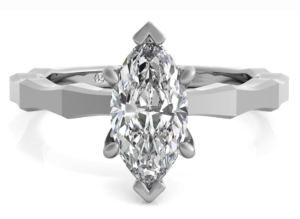
It leaves those corners more exposed.
Compare them to the other prongs. Those latch onto the crown for more security but cover more facets.
Protects Sharp Corners
Sharp corners on a diamond are the most vulnerable to chipping.
This is why V-shaped prongs are mostly used on cuts such as:
- Marquise
- Princess
- Heart
- Pear
- Trillion
To illustrate, here’s another set of V-prongs holding a marquise cut.
Take a minute to examine each of the six prongs. You’ll notice on the top and bottom are V-prongs because it comes to a point. On the sides are more traditional ones that reach over rounded edges.
If a sharp corner has a traditional prong, and it’s hit against a hard surface or dropped, there’s a higher chance of a chip.
For example, here’s a princess cut held by standard prongs.
The V-prong offers better protection because it holds the diamond on both sides of the point.
This doesn’t mean they’re the only option for holding corners, but it’s something to consider along with all the other factors.
Less Pressure
When jewelers place diamonds in prong settings, they exert pressure on the prong and diamond to secure it into the mounting.
Standard prongs place all the pressure in one area, while V-prongs spread it out across two points. The empty space in the middle means there’s less pressure on the diamond.
The ideal balance is having enough pressure from the prongs onto the diamond that it minimizes risk of it slipping out but doesn’t weaken the diamond by pressing it too tightly.
V-prongs attain this balance by offering a secure option and spreading out the pressure.
Cons
Not Recommended for Round Cuts
V-prongs best grip a diamond on pointed edges, so I don’t recommend them for round cuts. When they’re placed on fancy shapes like pear or heart cuts, you’ll notice only the corners have a V-prong.
The rounded edges have a traditional prong.
Round cuts are the most popular diamond cut, which is why you don’t see V-prongs as often.
V-prong settings are especially effective at gripping corners, holding them in a more secure fashion than a rounded prong could, but they’re best left to these specific circumstances.
Covers the Diamond’s Sides
Another disadvantage of V-prongs is they cover more of the diamond’s sides than standard prongs. The V has a wider area of coverage because it extends to both sides of the corner.
This feature is apparent in the marquise cut engagement ring below, where they hold the top and bottom points.
I’ve rotated the image to highlight how the V-prongs lay on its crown to hold it in place.
For whichever type of prong you select, be mindful of how it covers the diamond. Maximize visibility while also prioritizing security.
This downside is countered by leaving more of the diamond exposed on the top. The cut down the middle to form the V leaves the middle area open.
Sharp Edges
V-prongs are made to latch onto the corners of a diamond, so their design can also feature sharp edges.
This creates a challenge where they’re more prone to catching on clothes or other items during daily use. The prongs can bend backward and loosen the diamond.
If the V-prong is bent upward, it’ll be sharp to touch.
If you experience this challenge, get them re-tipped to avoid touching the ends as well as the chance the diamond could fall out.
I recommend not wearing it until it’s repaired.
Another tip is to remove your ring, no matter the style of its prongs, during physical activity.
How Do V-Prongs Compare to Other Settings?
V-prongs aren’t the only variation of the traditional prong setting.
For example, the double claw diamond ring setting features a total of eight prongs grasping the four sides.
It provides additional security but covers a wider area of the table, so I don’t recommend them for diamonds less than one carat.
In the example below, I’ve highlighted the double claw gripping the edge of a round-cut diamond.
The characteristic contrasts with V-prongs, which are designed to expose as much of the diamond as possible.
Square prongs feature a squared-off tip that latches on angled edges of cushion and emerald cuts.
It’s a modern aesthetic designed for the unique edges of those cuts, which wouldn’t work as well with V-prongs.
Flat tab prongs solve the tendency for prongs to snag.
To illustrate, here’s a set that holds a round-cut diamond.
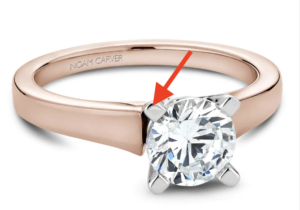
The top of the prong is square and lays flat against the diamond. As you can see, they often take up a decent amount of space.
They’re set to a lower height compared to other variations such as standard and V-prongs, so it’s a low-set prong like the basket setting.
I don’t recommend them for larger diamonds or ones where you want to maximize brilliance by sitting it high above the band.
Is a Setting with V-Prongs Right for You?
V-prongs are a fitting choice for cuts that feature sharp corners susceptible to chipping.
If your diamond is a princess, marquise, pear, or heart cut, a V-prong secures its pointed edges, while traditional prongs grasp the rounded ones.
If you’re considering a round brilliant, opt for standard prongs or an applicable variation instead of V-prongs.
The center diamond is the most important element of the piece and deserves the most attention, but take your time deciding which setting and type of prongs complement it.
With the right choice, you’ll maximize the diamond’s brilliance and security. In many cases, that’s done with V-prongs.

Jacob Clarke
Jacob Clarke is the founder of TeachJewelry.com.
He earned an Applied Jewelry Professional Diploma from the Gemological Institute of America (GIA) and now brings you essential information about diamonds, settings, and more.
Jacob has consulted with leading jewelry brands, and his work has been cited in Clean Origin, Diamond Nexus and industry publications.
He's also a member of the International Gem Society.
He enjoys discussing jewelry with readers, so contact him with any questions at jacob.clarke@teachjewelry.com.
